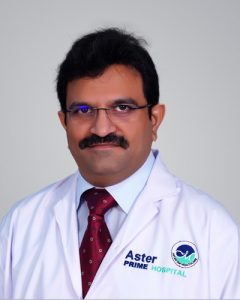Osteoporosis – Rarely we recognize it
Talk to any person about health goals as they get older, they talk about lifestyle changes to prevent, diabetes, hypertension, reducing cholesterol levels, but rarely do you hear someone talk about osteoporosis. Bent over at the waist, with a stick in hand to support is the typical image of a woman, which comes to our mind when we talk of old age. Most illustrations of an old woman in our Indian culture adhere to this. The commonest reason for this posture is osteoporosis. As the vertebrae break, and collapse, we lose height and stoop into this posture.
Decrease in Bone Density
As there are no signs and symptoms of the disease, until a fracture occurs, it sneaks up on you. It’s very common. There is a huge knowledge gap among the general public as well as lack of importance among care givers, leading to pain and disability, so severe, as to make this disease on par with any other pandemic. Any post-menopausal women or person over the age of 50, or who has had a previous simple fracture should be evaluated for osteoporosis and decreased bone density.
It’s also very serious. About only 40% of the people who suffer a hip fracture are alive, one year from the event, hence it has also been dubbed as the silent killer. Treatment of complications of osteoporosis is expensive, as it most often involves surgery, while prevention is easy and inexpensive.
Achieving & Sustaining Peak Bone Mass
Prevention is the better than cure. This aptly applies to this silent disease. Our body acts like a bone bank, as children we add more bone then we lose, especially in the growing age, we start to accumulate calcium in the bones, and this happens up to the age of about 35 years. 50% of this happens during adolescence. What we achieve at this age is called the peak bone mass. So how do we accumulate more quantities of this? By nutritious diet and weight bearing exercises during our growing years. The more we accumulate during these years, the more we can withdraw.
At the age of about 40 years or so we start to lose about 1% per annum which becomes about 5% per annum at menopause due to hormonal changes, this comes down to a loss of about 3% per annum for about 3 to 4 years after menopause for women (so we can lose up to 20% of the bone mass within 5 years of menopause) and after age of 50 years for men.
Now you will understand why I call this a bank, the more we have in our fixed deposit (peak bone mass), the more is our spending capacity.
Calcium getting leeched from bone to blood
99% of the 1kg of calcium resides in the bones, many a time we see patients getting blood calcium levels, done, this is of no use, as calcium is constantly leeched from the bone to maintain blood calcium levels. As our calcium intake reduces, the requirements are replenished by withdrawing calcium from the bone. This reduces the density of the bone as well as the inter-connectivity between bone cells, making the bone fragile and easily breakable. Simple falls from a standing height could lead to major fractures, which will warrant major surgeries, with high risk as most of the people have other co morbid conditions at the given age.
Calcium rich diet of dairy or milk products is sufficient to provide the daily requirement up to the pre-menopausal age, after that, it’s practically not possible to be able to ingest the full requirement from diet alone, we will require supplements. Along with them, weight bearing exercises, muscle strengthening and balance enhancing exercises are required to maintain bone health and prevent falls. Excessive intake of salt, carbonated drinks and alcohol prevent absorption of calcium and lead to deficiency.
Testing Bone Mineral Density as per doctors suggestions
Bone mineral Density (BMD) is the gold standard test available to evaluate the present status of our bones, based on which pharmacological interventions can be suggested. We have better therapeutics to treat and prevent osteoporosis nowadays. This disabling and painful condition can be controlled, and cured with timely interventions.
If your doctor doesn’t talk to you about osteoporosis, it’s your responsibility to bring it up. The two of you can arrive at a good treatment plan and also pass on this knowledge to the next generation to keep their bone banks filled to the brim.
——————————————————————————————————————————————————

Article is written by Dr. G Satish Reddy, MS,M.Ch(Ortho) U.K. ; Senior Consultant Orthopedic Surgeon, Joint Replacement Surgeon and Specialist in Sports Medicine, Aster Prime Hospital, Ameerpet, Hyderabad.







Comment here